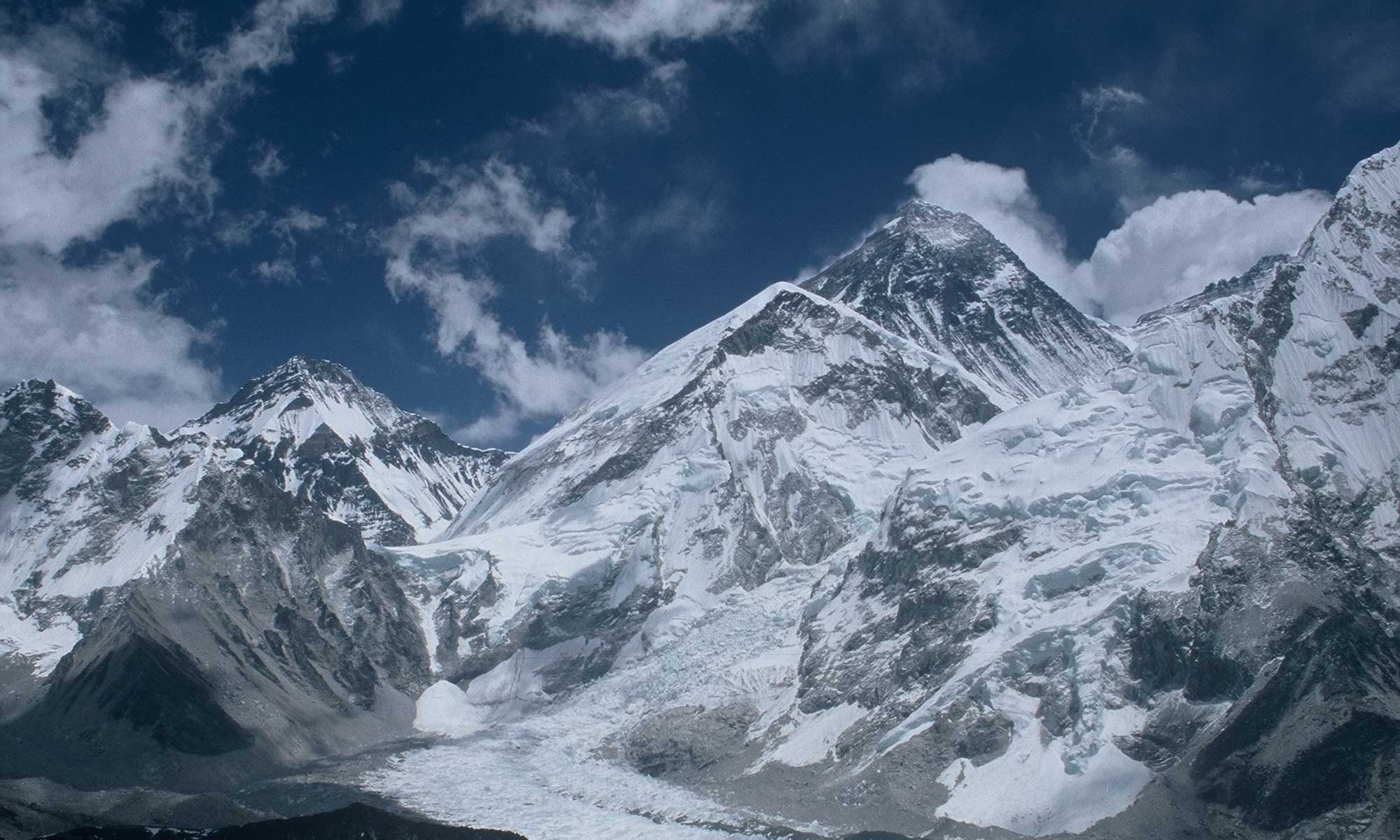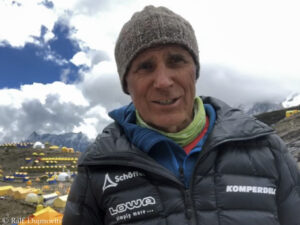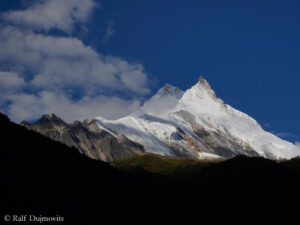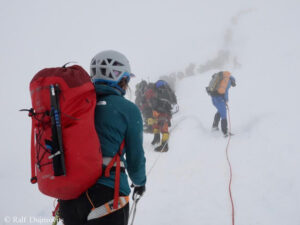“It wasn’t meant to be,” says Ralf Dujmovits. He made three summit attempts during his Manaslu expedition, all three failed due to bad weather. Twice, fresh snow and the associated high avalanche risk stopped Germany’s most successful high-altitude mountaineer. Once it was extremely strong wind that made his ascent impossible without bottled oxygen. This time, the 60-year-old did not get beyond Camp 4 at 7,400 meters. “It was an absolute roller coaster of emotions,” Ralf tells me from the base camp before heading back to Kathmandu.
Dujmovits had already thought he was on the summit of Manaslu in spring 2007. As it turned out later, however, he had missed the “True Summit”. That is why Ralf had now returned to Manaslu once again. “If you’re an honest person and you realize you’ve made a mistake, of course you want to fix it,” he had told me before leaving for Nepal. “This is all about me, not about a (eight-thousander shrink) list or anything else.”
Actually, Ralf had planned today, Monday, as the summit day for an “attempt at the last minute,” as he had put it. In terms of weather, it would even have fit. “You won’t believe it. Today is the most magnificent day of the entire expedition,” Ralf says, and I can literally hear him shaking his head. “But because of all the fresh snow, it’s just way too dangerous.”
“A terrible day”
During the night from Saturday to Sunday, he says, it snowed at least half a meter at Camp 2 at 6,400 meters. “In places, where the wind had blown it, the fresh snow was 70 to 80 centimeters high.” Four did the trail-breaking down, says Dujmovits – in addition to himself, a Sherpa, an Ecuadorian and an Iranian: “It was an eight-hour struggle. In tow, we had about 100 people who were distributed between Camps 2 and 3 and had actually also wanted to be on the summit today, Monday. Again and again we triggered avalanches between Camp 2 and Camp 1.”
The situation was extremely dangerous, says the experienced German climber, who has made and survived more than 50 expeditions in the Himalayas and Karakoram. “Above us – at a place we had already passed – another avalanche was triggered. Unfortunately, a Sherpa was buried and died. It was a terrible day.”
Bad weather, many accidents
It was the third death in a week on Manaslu. On Monday last week, the Nepalese mountain guide Anup Rai had died in an avalanche below Camp 4. Ralf had been in Camp 3 at around 6,800 meters at the time. On the same day, American ski mountaineer Hilaree Nelson had fallen to her death while attempting a ski descent from the summit.
“It was just a bad season with extremely bad weather, there were a lot of accidents,” says a thoughtful Ralf Dujmovits. “There was never any calm.” Even this Monday, he says, the helicopters were still in constant use, “partly to get people off the mountain by longline.”
For him personally, the expedition was a “very extraordinary” one, Dujmovits sums up, referring to the masses of climbers on Manaslu. He returns with mixed feelings. “The expeditions have evolved. There are beautiful things in it. But also a lot that I rather don’t like.”
Update 4 October: In the meantime, Mingma Sherpa, head of the Nepalese expedition operator Seven Summit Treks, has announced that the Nepalese who died in the avalanche is Dawa Chhiring Sherpa. He was 32 years old. R.I.P.



